| |
|
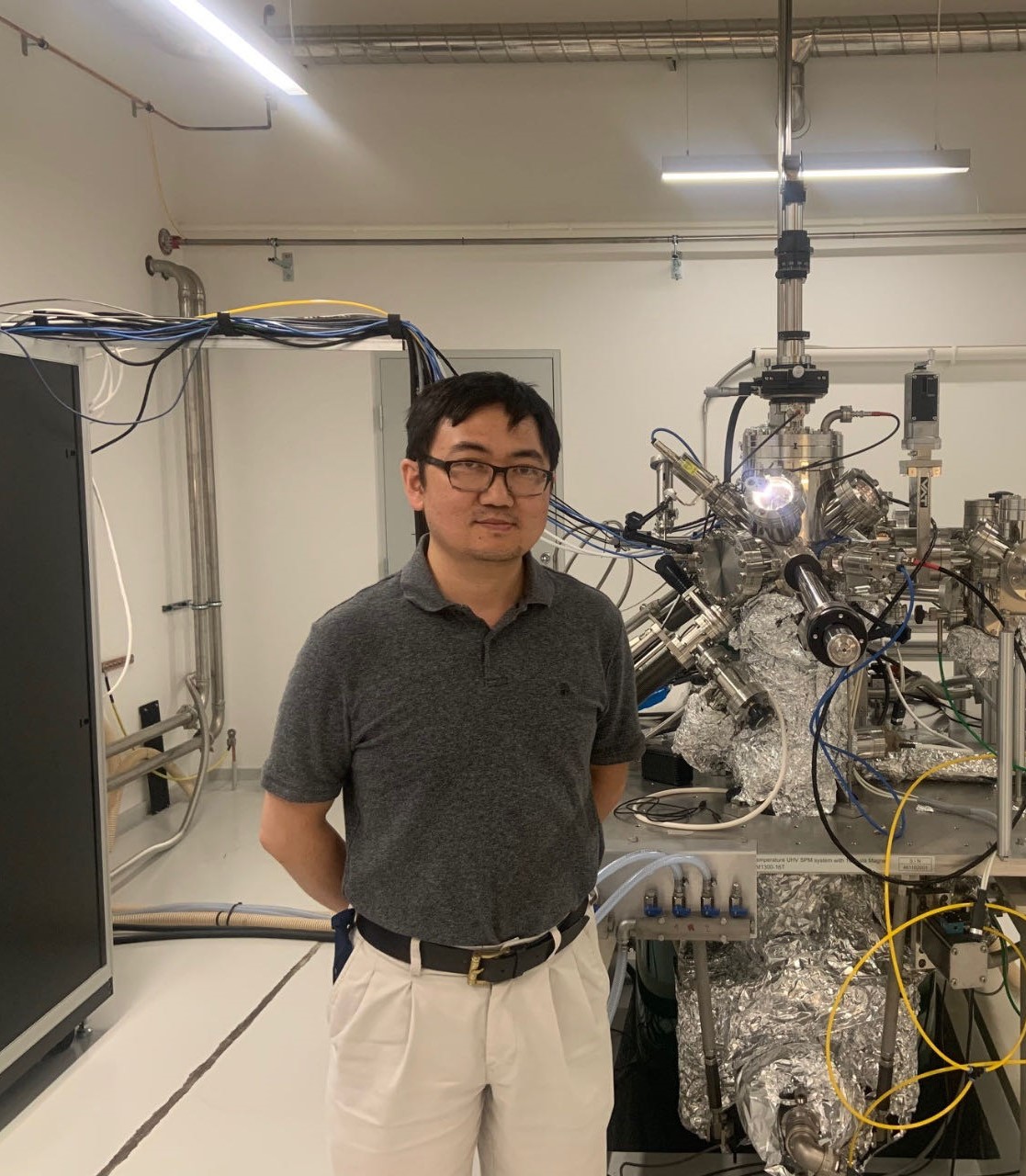
|
|
Yong Chen |
|
Professor |
|
Quantum Matter and Devices Lab |
|
Aarhus University |
|
Purdue University |
|
USA |
|
Personal homepage
|
|
Title: In-operando Microscopy and Spectroscopy Measurements on 2D Materials and Devices
Abstract: Two-dimensional materials offer unique opportunities to perform multimodal, “in-operando”, (nano)device-compatible measurements combining various surface science/optical microscopies and spectroscopies with electrical transport/gating, to gain a microscopic and deeper understanding of materials properties and device performance. This talk will describe several examples of such measurements in gated graphene and twisted bilayer graphene, studied by optical Raman spectroscopy, micro angle resolved photoemission spectroscopy (ARPES), and scanning probe microscopies. |
|
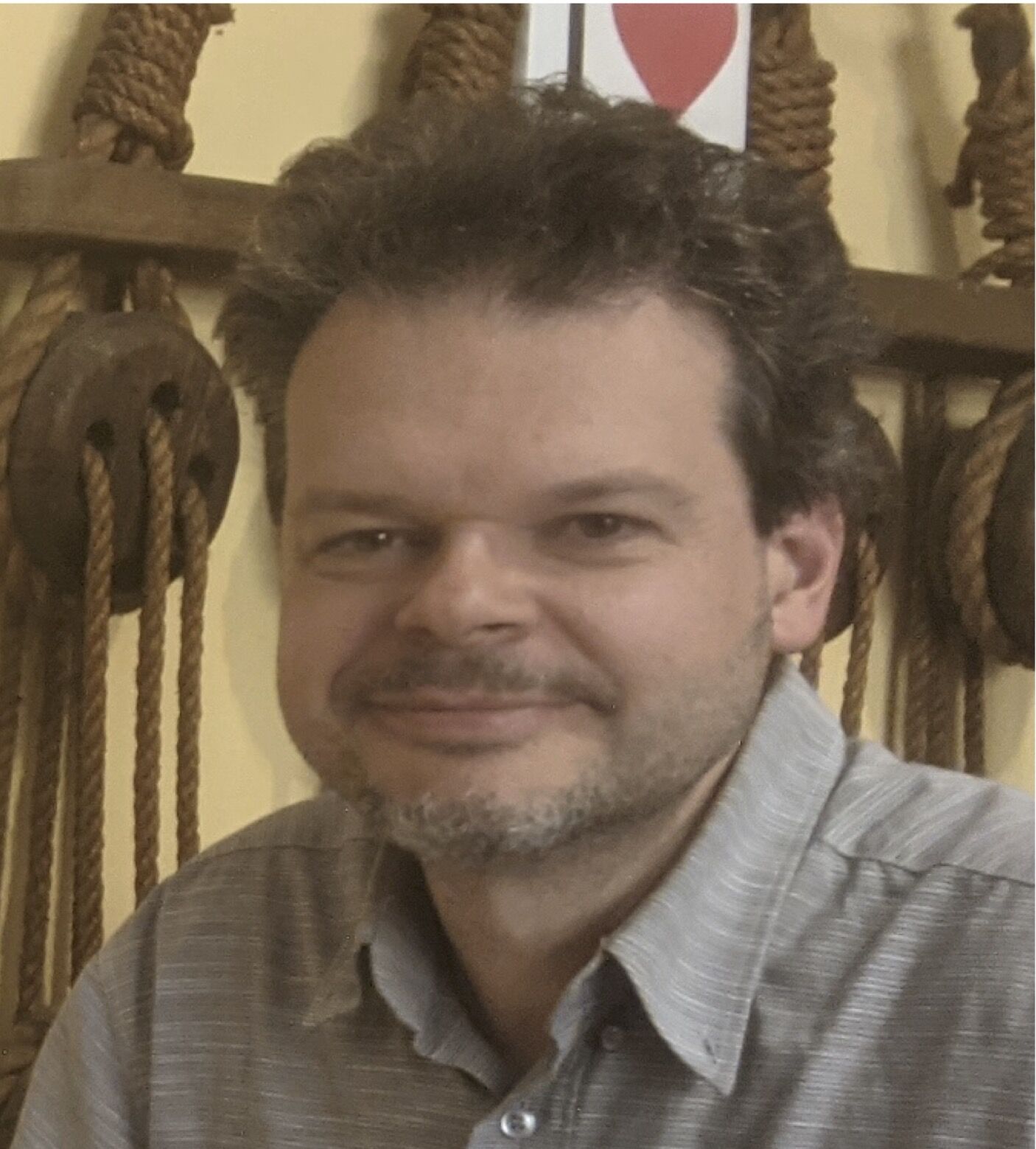
|
|
Fabrizio Chiti |
|
Academician |
|
Professor of Biochemistry at the University of Florence |
|
Member of the scientific board of the Doctorate/ PhD Program in Biomedical Sciences, Coordinator |
|
The Academy of Europe |
|
Italy
|
|
Personal homepage |
|
Title:The Insertion of Putative Aminosterol Drugs Against Neurodegenerative Diseases. From the Characterization at the Nanoscale Level to Its Mechanism of Action in Cells and Clinical Trials
Abstract:Natural aminosterols, such as squalamine and trodusquemine, are promising drug candidates against neurodegenerative diseases, like Alzheimer and Parkinson diseases. They are known to inhibit membrane-induced protein aggregation and prevent the binding of misfolded protein oligomers to cell membranes, therefore reducing toxicity in a wide range of neurodegenerative diseases, such as Alzheimer and Parkinson diseases. One of these small molecules has just ended a phase II clinical trial for the treatment of Parkinson diseases and associated constipation. Using a number of experimental techniques at the nanoscale level, we elucidated the mechanism of insertion of trodusquemine into the lipid bilayer of large unilamellar vesicles (LUVs). The displayed binding behaviour causes three major physicochemical changes of the lipid bilayer, all known to impair the interaction of misfolded protein oligomers with the cell membrane, protecting it from their toxicity. We then compared three chemically different aminosterols, finding that they affected each of these membrane properties to different extents and also had different potencies (EC50) in protecting cultured cell membranes against amyloid-b oligomers associated with Alzheimer disease. A global fitting analysis led to an analytical equation describing quantitatively the protective effects of aminosterols as a function of their concentration and relevant membrane effects (validated by the leave-one-out cross-validation method), as well as chemical moieties. The analysis correlates aminosterol-mediated protection with well-defined chemical moieties, linking quantitatively their chemistry to their protective effects on biological membranes.
|
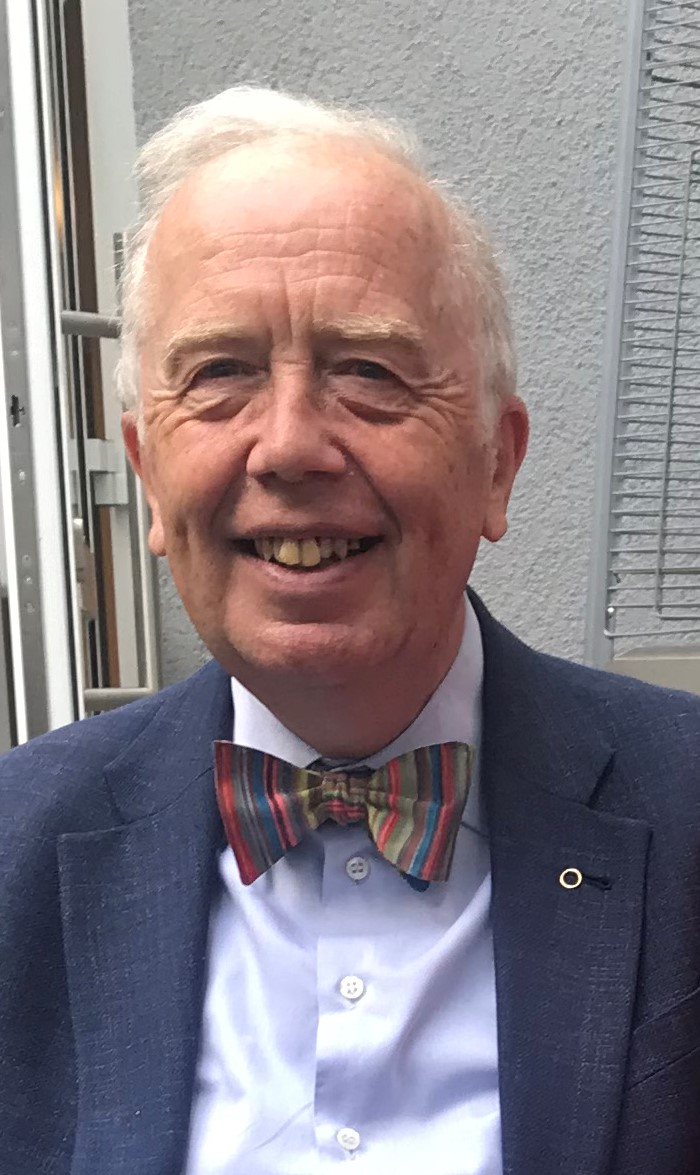
|
|
Michael James Cardwell Crabbe |
|
Emeritus Professor |
|
Supernumerary Fellow, Wolfson College |
|
President, International Engineering and
Technology Institute (IETI) |
|
University of Oxford |
|
UK |
|
Personal homepage |
|
Title: The Importance of Nano-scale Omics in Attaining the UN Sustainable Development Goals
Abstract: The 17 Sustainable Development Goals (SDGs) are an urgent call for action by all countries - developed and developing - in a global partnership. They recognize that ending poverty and other deprivations must go hand-in-hand with strategies that improve health and education, reduce inequality, and spur economic growth – all while tackling climate change and working to preserve our oceans and forests.
Omics techniques at the nano-scale – genomics, epigenomics, transcriptomics, metabolomics, proteomics - are critical in attaining the SDGs. Examples of their application in medicine, environmental issues on land and in the ocean, plant evolution and public health will be given. Education about these issues at all levels of the population will be vital for policy development in the future.
|
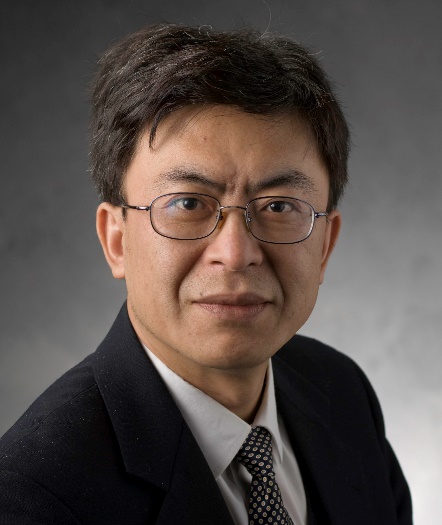
|
|
Lixin Dong |
|
Professor |
|
Department of Biomedical Engineering |
|
Vice President for Educational Activities, IEEE Nanotechnology Council |
|
City University of Hong Kong |
|
China |
|
Personal homepage |
|
Title: Micro-/NanoRobotic Systems: Physical Integration and Applications
Abstract: One of the common challenges for microrobots, neuro dust, smart dust and other micro-sized systems is their functionalization while keeping a miniaturized size. For microrobots, tremendous attention has been paid to locomotion, navigation, chemical functionalization for biocompatibility, and various designs for cargo carrying. However, most micro-sized robots still look like specially shaped particles or colloids while the others are still big in size. On the other hand, the advancement of low dimensional nanomaterials has provided possibilities to tackle the barrier in integrating these carriers with such devices as wireless energy/signal transmitters, sensors, actuators, and tools built from them. This talk briefly reviews the recent advancement of nanorobotic manipulation for in-situ prototyping of nanodevices based on transmission electron microscopy (TEM), scanning TEM (STEM), and scanning electron microscopy (SEM), and highlights recent trends in embedding structural and collective intelligence into microrobotic systems. Essential techniques for rapid prototyping and device-level structure-property correlation are demonstrated using nanorobotic manipulation and a variety of stimuli and chips for in-situ nanorobotic technologies, which enable rapid prototyping of nanodevices, provide boundary conditions for nanodevice simulation, assist in determining structural parameters for their design and optimization, and serve for the quality control of batch-fabricated systems. |
|
|
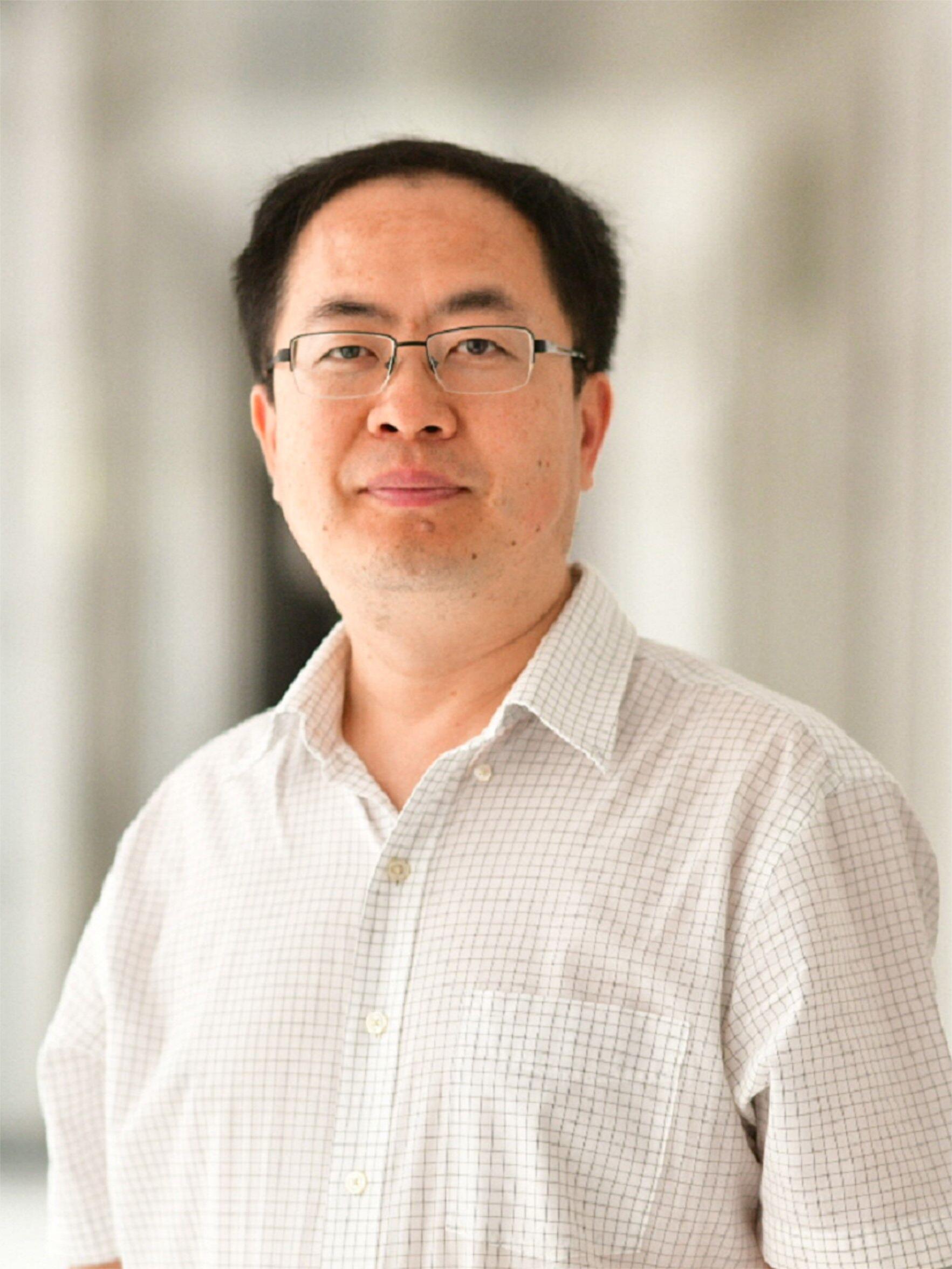
|
|
Xiaojun Han |
|
Professor |
|
Head of Chemistry Department |
|
School of Chemistry and Chemical Engineering |
|
Harbin Institute of Technology |
|
China |
|
Personal homepage |
|
Title: Phospholipid Assembly Based Artificial Cells
Abstract: Life begins with cells. Artificial cells are cellular like structures that can mimic some (or all) of cell functions. Building artificial cells from the bottom up helps to reveal the working mechanism of cells and provide a theoretical basis for the origin of life. Because phospholipid molecules themselves are the components of cell membranes, they have inherited advantages in constructing artificial cells. Targeting the key issues in this field, we carried out following projects in recent years.[1] We constructed giant unilamellar vesicles (GUVs) in physiological salt solutions, which laid the foundation for the construction of complex artificial cells. Based on this achievement, the mechanism of the influence of osmotic pressure on vesicular deformation was further clarified to construct a divisible artificial "eukaryotic cell"[2]. The chemical information exchange between two "organelles" within the artificial cell was also realized. We developed a method to construct non spherical organelles[3,4] to mimic chloroplast grana capable of capturing light energy. We built spatial coded artificial tissues using magnetic and acoustic fields. These tissues possessed the vasodilation and muscle contraction functions. [5-7]
References:
[1] X. Wang, H. Du, Z. Wang, W. Mu, X. Han.* Versatile phospholipid assemblies for functional synthetic cells and artificial tissues. Advanced Materials, 2021, 33(6): 2002635.
[2] W. Zong, S. Ma, X. Zhang, X. Wang, Q. Li, X. Han.* A fissionable artificial eukaryote-like cell model. Journal of the American Chemical Society, 2017, 139(29): 9955-9960.
[3] Q. Li, X. Han.* Self‐Assembled “ Breathing ” Grana‐Like Cisternae Stacks. Advanced Materials, 2018, 30(25): 1707482.
[4] Q. Li, C. Li, W. Mu, X. Han.* Topological defect-driven buckling of phospholipid bicelles to cones for micromotors with modulated heading pathways. ACS nano, 2019, 13(3): 3573-3579.
[5] Q. Li, S. Li, X. Zhang, W. Xu, X. Han.* Programmed magnetic manipulation of vesicles into spatially coded prototissue architectures arrays. Nature communications, 2020, 11(1): 232.
[6] X. Zhang, C. Li, F. Liu, W. Mu, Y. Ren, B. Yang, X. Han.* High-throughput production of functional prototissues capable of producing NO for vasodilation. Nature Communications, 2022, 13(1): 2148.
[7] C. Li, X. Zhang, B. Yang, F. Wei, Y. Ren, W. Mu, X. Han.* Reversible deformation of artificial cell colonies triggered by actin polymerization for muscle behavior mimicry. Advanced Materials, 2022, 34(34): 2204039. |
|

|
|
Mark Hopkinson |
|
Professor |
|
Department of Electronic & Electrical Engineering |
|
The University of Sheffield |
|
UK |
|
Personal homepage |
|
Title: Surface Nano-Structuring of Semiconductors by Nanosecond Pulsed Laser Interference
Abstract: In this work, we present an innovative approach for nano-structuring semiconductor surfaces using an in-situ patterning process. Nanosecond pulsed direct laser interference patterning (DLIP) combined with epitaxial growth is introduced to create functional surface features on semiconductors in a rapid single-exposure step. By utilising two to four laser beams, submicron periodic nanostructures including 1D nano-gratings, 2D nano-islands and nano-holes are fabricated, serving as nucleation centres for the formation of quantum dots. The ability to create periodic features offers control over the spatial arrangement and properties of the resulting quantum structures. This direct and efficient nature of the technique makes it promising for practical applications in various fields, such as optoelectronics, nanophotonics and quantum technologies. |
|
|

|
|
Mario Lanza |
|
Associate Professor |
|
Physical Science and Engineering Division |
|
Chair of the Nanotechnology Committee of the Electron Devices Society |
|
King Abdullah University of Science and Technology (KAUST) |
|
Saudi Arabia |
|
Personal homepage |
|
Title: Towards CMOS/2D Hybrid Microchips
Abstract: Two-dimensional layered materials (2D-LMs) materials have outstanding physical, chemical and thermal properties that make them attractive for the fabrication of solid-state micro/nano-electronic devices and circuits. However, synthesizing high-quality 2D-LMs at the wafer scale is difficult, and integrating them in semiconductor production lines brings associated multiple challenges. Nevertheless, in the past few years substantial progress has been achieved and leading companies like TSMC, Samsung and IMEC have started to work more intensively on the fabrication of devices using 2D-LMs. In this keynote talk, I will discuss the state-of-the-art on micro/nano-electronic devices made (entirely or partially) of 2D-LMs, the most sophisticated circuits ever constructed, and the fabrication of CMOS/2D hybrid microchips. I will put special emphasis on devices that employ hexagonal boron nitride, the only 2D-LM with an enough high band gap to be employed as dielectric. I will also discuss the main technological challenges to face in the next years and provide some recommendations on how to solve them.
|

|
|
Bo Liu |
|
Executive Editor for Nature Partner Journals |
|
Scientific Editor Nature Communications |
|
Springer Nature |
|
|
|
|
|
Title: Publishing with Nature Journals
Abstract: In this talk, I will introduce the Nature family journals, their editorial process, how to prepare a manuscript for a top journal from an editor’s perspective.
Bio: Bo Liu is the Executive Editor for 10 Nature Partner Journals (npjs) spanning in a broad range of physical, environmental and social science subject areas. Bo joined Springer Nature as a scientific editor at Nature Communications in 2017, where he spent three years handling manuscripts on solar cells and semiconductor photo-physics. Prior to his editorial career, Bo graduated from Zhejiang University, China, and obtained a PhD in Physics at National University of Singapore. He also worked as a postdoc at the Graphene Research Center in Singapore and University of Washington, US. Bo is now based in Shanghai. |
|

|
|
Junyang Liu |
|
Associate Professor |
|
College of Chemistry and Chemical Engineering |
|
Innovation Laboratory for Sci. & Tech. of Energy |
|
Materials of Fujian Province (iKKEM) |
|
Xiamen University |
|
China |
|
Personal homepage |
|
Title: Single-Molecule Electrical Characterization on a Controllable-Break-Junction Chip through Electrostatic Microactuators
Abstract: Micro/nano-manufacturing technology has greatly promoted the development of molecular electronics, with the success rate and stability of molecular junction fabrication being greatly improved, which makes molecular electronic devices with complex structures and circuits possible. We aim to develop a series of microchips that can be used for optical, electrical, and thermal measurement experiments at the single-molecule scale, based on our previously established precise micro/nano-manufacturing technologies with high-energy electron and ion beams in a noise-free laboratory environment.
At present, our group has developed a mechanically controlled break junction (MCBJ) technology on a microchip with high stability for the electrical characterization of molecular junction structure and chemical reactions at a single-molecule scale. However, this chip still needs an additional drive motor to control the opening and closing of the nanoelectrodes, which brings inconvenience to achieving controllable preparation and integration of molecular electronic devices.
To further promote the miniaturization and integration of single-molecule electronics, we develop an on-chip break junction system, which uses electrostatic actuation of MEMS to replace the complex external motor to accurately drive the nanoelectrodes for nanogap creation to match the length of a target molecule, so as to construct and manipulate the single-molecule junction. This break-junction chip enables more stable and controllable molecular junction construction, and allows for the simultaneous fabrication of multiple molecular devices on a single chip. This will provide new ideas and methods for the preparation and application of molecular devices.
References:
[1] Y. Zheng, P. Duan, Y. Zhou, C. Li, D. Zhou, Y. Wang, L.-C. Chen, Z. Zhu, X. Li, J. Bai, K. Qu, T. Gao, J. Shi, J. Liu*, Q.-C. Zhang*, Z. N. Chen*, W. Hong*, Fano Resonance in Single-Molecule Junctions. Angew. Chem. Int. Ed. 2022, 67, e202210097.
[2] C. Tang, T. Stuyver, T. Lu, J. Liu, Y. Ye, T. Gao, L. Lin, W. Liu, J. Shi, S. Shaik*, H. Xia*, W. Hong*. Voltage-driven control of single-molecule keto-enol equilibrium in a two-terminal junction system. Nature Communications, 2023, accepted.
[3] Y. Zhao, W. Liu, J. Zhao, Y. Wang, J. Zheng, J. Liu*, W. Hong, Z.-Q. Tian, The fabrication, characterization and functionalization in molecular electronics. International Journal of Extreme Manufacturing, 2022, 4, 022003.
[4] P. Duan, Y. Wang, L. Chen, K. Qu, J. Liu*, Q.-C. Zhang*, Z. Chen*, W. Hong*. Transport Modulation through Electronegativity Gating in Multiple Nitrogenous Circuits. Small, 2022, 18, 2200361.
[5] X. Huang, C. Tang, J. Li, L.-C. Chen, J. Zheng, P. Zhang, J. Le, R. Li, X. Li, J. Liu*, Y. Yang, J. Shi, Z. Chen, M. Bai, H.-L. Zhang, H. Xia, J. Cheng*, Z.-Q. Tian, W. Hong*. Electric-field-induced selective catalysis of single-molecule reaction, Science Advances, 2019, 5, eaaw3072.
[6] J. Liu, X. Zhao, J. Zheng, X. Huang, Y. Tang, F. Wang, R. Li, J. Pi, C. Huang, L. Wang, Y. Yang*, J. Shi, B.-W. Mao, Z.-Q. Tian, M. R. Bryce*, W. Hong*. Transition from tunneling leakage current to molecular tunneling in single-molecule junctions, Chem, 2019, 5, 390-401.
|
|
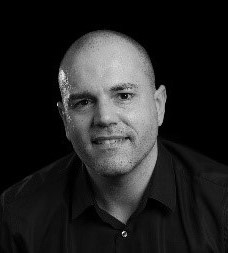
|
|
Josep Puigmartí Luis |
|
Professor |
|
Department of Materials Science and Physical Chemistry |
|
Institute of Theoretical and Computational Chemistry |
|
University of Barcelona |
|
Spain |
|
Personal homepage 1
Personal homepage 2 |
|
Title: Controlled Materials Engineering Via Microfluidic Technologies
Abstract: Self-assembly has long being used to control covalent and non-covalent interactions where molecular design has been the major driving force to achieve a desired outcome. Like in nature, a full control over self-assembly processes could lead to rationalized structure-property correlations, a long-time sought in chemistry, physics and materials science. However, the pathways followed and the mechanisms underlying the formation of supramolecular aggregates are still a major challenge for the scientific community. Accordingly, the elucidation of nucleation and growth mechanisms will be highly required to push supramolecular chemistry to the next level, where access to nature inspired functions will be accomplished. In this contribution, I will present how reaction-diffusion (RD) conditions established within microfluidic devices can be used to uncover pathway complexity as well as to trigger pathway selection. Specifically, I will show that microfluidic RD conditions provide an unprecedented kinetic control over self-assembly processes; for example, enabling the isolation of well-defined kinetically trapped states as well as unprecedented metastable intermediates. This research provides a new tool to study and understand supramolecular chemistry, and opens up new avenues for the engineering of advanced functional.
| |
|

|
|
Guo Zhan Lum |
|
Assistant Professor |
|
Assistant Chair (International Engagement) |
|
School of Mechanical & Aerospace Engineering |
|
Nanyang Technological University |
|
Singapore |
|
Personal homepage |
|
Title: Highly Functional Magnetic Miniature Robots
Abstract: Miniature robots are mobile devices that are in the micro/millimeter length-scales. As these robots can exploit their size and mobility to non-invasively access highly confined and enclosed spaces, they have the potential to revolutionize targeted drug deliveries and minimally-invasive surgeries. Furthermore, miniature robots are proven to be powerful tools that can facilitate a wide range of fundamental studies in materials science and biology, as well as to enable critical manipulation tasks in various lab-on-chip applications. While the creation of the six-degrees-of-freedom (six-DOF) magnetic miniature robots is a recent major advancement in this technology, there exist two critical limitations that render these machines impractical; (i) under precise orientation control, these robots have slow sixth-DOF angular velocities (4 degree/second) and it is difficult to apply desired magnetic forces on them; (ii) such robots cannot perform soft-bodied functionalities. Here we introduce a fabrication method that can magnetize optimal miniature robots to produce 51–297 folds larger sixth-DOF torque than existing small-scale, magnetic robots. We also propose a universal actuation method that is applicable for rigid and soft magnetic miniature robots with six-DOF. Under precise orientation control, our optimal robots could execute full six-DOF motions reliably and achieve sixth-DOF angular velocities of 173 degree/second. Our soft magnetic miniature robots could display unprecedented functionalities; our six-DOF jellyfish-like robot could swim across barriers impassable by existing similar devices and our six-DOF gripper was 20 folds quicker than its five-DOF predecessor in completing a complicated, small-scale assembly. We had also created a highly dexterous magnetic miniature robot that had six-DOF motions and multimodal locomotion, and it could negotiate across highly complicated environments. We envision that this work will be able to inspire future miniature robots to become considerably more dexterous and capable for manipulation tasks. |
|

|
|
Caofeng Pan |
|
Professor |
|
Beijing Institute of Nanoenergy and Nanosystems |
|
University of Chinese Academy of Sciences |
|
China |
|
Personal homepage |
|
Title:Low-dimensional Semiconductor Materials for Stretchable Electronics and Tactile Sensing
Abstract: Emulation of human senses via electronic means has long been a grand challenge in research of artificial intelligence as well as prosthetics, and is of pivotal importance for developing intelligently accessible and natural interfaces between human/environment and machine.
In this talk, we present a novel design of nanowire LED arrays, which can be used to directly record the strain distribution by piezo-phototronic effect with a resolution as high as 2.7 μm, which is published in Nat. Photonics. Such sensors are capable of recording spatial profiles of pressure distribution, and the tactile pixel area density of our device array is 6250000/cm2, which is much higher than the number of mechanoreceptors embedded in the human fingertip skins (~ 240/cm2).
When the device is under pressure, the images unambiguously show that the change in LED intensity occurred apparently at the pixels that were being compressed by the molded pattern, while those were off the molded characters showed almost no change in LED intensity. Instead of using the cross-bar electrodes for sequential data output, the pressure image is read out in parallel for all of the pixels at a response and recovery time-resolution of 90 ms. Furthermore, our recent studies achieve such piezo-phototronic effect induced strain mapping in a flexible n-ZnO NWs/p-polymer LEDs array system. This may be a major step toward digital imaging of mechanical signals by optical means, with potential applications in touch pad technology, personalized signatures, bio-imaging and optical MEMS.
This research not only introduce a novel approach to fabricate Si-based or polymer-based flexible light-emitting components with high performances, but also may be a great step toward digital imaging of mechanical signals using optical means, having potential applications in artificial skin, touch pad technology, personalized signatures, bio-imaging and optical MEMS, and even and smart skin.
References:
[1] C. F. Pan, L. Dong, G. Zhu, S. M. Niu, R. M. Yu, Q. Yang, Y. Liu, Z. L. Wang, High-resolution electroluminescent imaging of pressure distribution using a piezoelectric nanowire LED array, Nature Photonics, 2013, 7(9): 752-758.
[2] R. R. Bao, C. F. Wang, L. Dong, R. M. Yu, K. Zhao, Z. L. Wang, C.F. Pan, Flexible and Controllable Piezo-Phototronic Pressure Mapping Sensor Matrix by ZnO NW/p-Polymer LED Array, Advanced functional materials, 2015, 25(19): 2884-2891.
[3] X. Y. Li, M. X. Chen, R. M. Yu, T. P. Zhang, C. F. Pan, Enhancing Light Emission of ZnO-Nanofilm/Si-Micropillar Heterostructure Arrays by Piezo-Phototronic Effect, Advanced Materials, 2015, 27(30): 4447-4453. |
|

|
|
Adam Willis Perriman |
|
Professor |
|
Professor of Bioengineering
UKRI Future Leaders Fellow |
|
School of Cellular and Molecular Medicine |
|
University of Bristol |
|
UK |
|
Personal homepage |
|
Title: Engineered Living and Dead Materials: From 3D printable Enzyme Plastics to Living Bacterial Microreactors
Abstract: Engineered Living Materials (ELMs) present an exciting opportunity to integrate and scale outputs from synthetic biology. ELMs are currently being developed for a wide variety of applications, which range from gut microbiome re-engineering to fungal-bacterial composite building materials. Ideally, the living component of an ELM or its output should interface with and modulate the bulk structure of material, by driving assembly or chemical processes from the nano to the macro length scales. Accordingly, we present recent and ongoing research on the development of smart highly fabricable composite bionanomaterials and engineered living materials with tuneable emergent properties. Specifically, we describe the development of enzymatically-active plastics [1] melts [2] and membranes [3] with robust structures, and a new class of bioink comprising an oxidoreductase-mediated interpenetrating network (IDE) gel with thermoresponsive shape changing properties that can be used to print living bacterial microreactors capable of detoxifying organophosphates under flow.
References:
[1] W. H. Zhang, G. J. Day, I. Zampetakis, M. Carrabba, Z. Zhang, B. M. Carter, N. Govan, C. Jackson, M. Chen, and A. W. Perriman. Three-Dimensional Printable Enzymatically Active Plastics. ACS Applied Polymer Materials, 2021, 3(12): 6070-6077.
[2] A. P. Brogan, K. P. Sharma, A. W. Perriman, and S. Mann. Enzyme activity in liquid lipase melts as a step towards solvent-free biology at 150 C. Nature communications, 2014, 5(1): 5058.
[3] G. J. Day, W. H. Zhang, B. M. Carter, W. Xiao, M. R. Sambrook, and A. W. Perriman. A Rationally Designed Supercharged Protein-Enzyme Chimera Self-Assembles In Situ to Yield Bifunctional Composite Textiles. ACS Applied Materials & Interfaces, 2021, 13(50): 60433-60445.
|
|

|
|
Tenio Popmintchev |
|
Professor |
|
University of California San Diego |
|
USA |
|
Personal homepage
|
|
Title: Quantum Regimes of Coherent X-ray Generation with Strongly Correlated Electron Dynamics and Attosecond Rabi Oscillations for Advanced Nanoimaging
Abstract: Ultrafast femtosecond-to-attosecond imaging and spectroscopies using coherent EUV and X-ray light based on the extreme nonlinear process of high harmonic generation are already addressing grand challenges in complex molecular systems, advanced nanomaterials, and plasmas. The exquisite quantum control of the attosecond dynamics of the radiating electrons in this process makes it possible to sculpt the classical and quantum properties of light with unprecedented tunability of spectral, spatial, and temporal shape, and spin and orbital angular momentum state. The full spatial and temporal coherence of this unique light allows for multi-dimensional imaging at the extreme with a 4D spatial and temporal resolution of nanometers and femtoseconds, with access to an additional 5th dimension using the X-ray absorption fingerprinting of elemental and chemical specificity. Here, we present two novel regimes of coherent X-ray generation using short wavelength UV and EUV driving lasers where the design of the light properties are dominated by distinctive quantum dynamics in a simple He atom with two entangled electrons. In the first regime, using UV lasers, as a result of the strongly correlated dynamics of the helium electrons, we generate a secondary high harmonic plateau extending from the EUV up to the water window of the soft X-ray spectrum. Due to simultaneous recombination of two accelerated electrons, a single high-energy photon is emitted only when there are strongly entangled electron dynamics. This physical process paves a way to a sensitive attosecond-to-femtosecond spectroscopy as a probe of highly correlated electron-electron interactions in atomic and molecular systems, and similar physics might be able to reveal dynamics in strongly correlated phase transition materials and nanosystems of interest for quantum computing and superconductivity. In a second regime, where even shorter-wavelength EUV laser light drives the high harmonic generation, we predict that the macroscopic physics is favorably mitigating phase mismatching and group velocity mismatching effects in the soft X-ray region. Furthermore, on a single atom level, the emission is strongly enhanced, first, by the short wavelength driver where the quantum diffusion of the electrons is minimized, and second, by attosecond Rabi oscillations at resonance which lead to greatly suppressed ionization that otherwise would terminate the emission. Theoretically, this regime is scalable and holds the potential for a bright coherent light source at the technologically relevant EUV and soft X-ray wavelengths of interest for metrology with near-wavelength resolution and coherent printing. Our advances in coherent EUV and X-ray light generation and quantum control over light properties enable new insights into complex entangled dynamics and new applications in nanomaterials and quantum technologies.
1. T. Popmintchev, et al., Bright coherent ultrahigh harmonics in the keV x-ray regime from mid-infrared femtosecond lasers, Science 336 (6086), 1287-1291 (2012)
2. D. Popmintchev, et. al., Ultraviolet surprise: Efficient soft x-ray high-harmonic generation in multiply ionized plasmas, Science 350 (6265), 1225-1231 (2015)
3. D. Popmintchev, at. al., Coherent EUV - Soft X-ray Light with Continuous Red and Blue Wavelength Tunability, CLEO: Fundamental Science, FW4M.4 (2023)
4. S. Wang, et. al., CLEO Europe EQEC: Postdeadline, PD-1.5 (2023)
5. A. de las Heras, et. al., Attosecond Rabi oscillations in bright high harmonic emission in the X-ray regime driven by XUV pulses, Frontiers in Optics, FTu1C.3 (2022)
|
|

|
|
Federico Rosei |
|
Professor |
|
INRS Centre for Energy |
|
Materials and Telecommunications |
|
Institut National de la Recherche Scientifique, Varennes (QC) |
|
Canada |
|
Personal homepage |
|
Title: Multifunctional Materials for Emerging Technologies
Abstract: This presentation focuses on structure property/relationships in advanced materials, emphasizing multifunctional systems that exhibit multiple functionalities. Such systems are then used as building blocks for the fabrication of various emerging technologies. In particular, nanostructured materials synthesized via the bottom–up approach present an opportunity for future generation low cost manufacturing of devices [1]. We focus in particular on recent developments in solar technologies that aim to address the energy challenge, including third generation photovoltaics, solar hydrogen production, luminescent solar concentrators and other optoelectronic devices. [2-40]
References:
[1] J. Phys. Cond. Matt. 16, S1373 (2004); [2] Adv. Mater. 22, 1741 (2010); [3] J. Am. Chem. Soc. 132, 8868 (2010); [4] Adv. Mater. 23, 1724 (2011); [5] Appl. Phys. Lett. 98, 202902 (2011); [6] Chem. Comm. 48, 8009 (2012); [7] Adv. Func. Mater. 22, 3914 (2012); [8] Nanoscale 4, 5588 (2012); [9] Nanoscale 5, 873 (2013); [10] J. Power Sources 233, 93 (2013); [11] Chem. Comm. 49, 5856 (2013); [12] J. Phys. Chem. C 117, 14510 (2013); [13] Nature Phot. 9, 61 (2015); [14] Nanoscale 8, 3237 (2016); [15] Nano Energy 27, 265 (2016); [16] Small 12, 3888 (2016); [17] Nanotechnology 27, 215402 (2016); [18] J. Mater. Chem. C 4, 3555 (2016); [19] Sci. Rep. 6, 23312 (2016); [20] Adv. En. Mater. 6, 1501913 (2016); [21] Nanoscale 8, 4217 (2016); [22] Adv. Sci. 3, 1500345 (2016); [23] Small 11, 5741 (2015); [24] Small 11, 4018 (2015); [25] J. Mater. Chem. A 3, 2580 (2015); [26] Nano Energy 34, 214 (2017); [27] Nano Energy 35, 92 (2017); [28] Adv. Func. Mater. 27, 1401468 (2017); [29] Adv. En. Mater. 8, 1701432 (2018); [30] Chem 3, 229 (2017); [31] Nature Phot. 12, 271 (2018); [32] Nano Energy 55, 377 (2019); [33] Nanoscale Horiz. 4, 404 (2019); [34] Appl. Cat. B 250, 234 (2019); Adv. Func. Mater. 29, 1904501 (2019); [35] ACS Photonics 6, 2479 (2019); [36] Appl. Cat. B 264, 118526 (2020); [37] Adv. Func. Mater. 30, 1908467 (2020); [38] J. Mater. Chem. A 8, 20698 (2020); [39] Nano Energy 79, 105416 (2021); [40] Nano Energy 81, 105626 (2021).
|
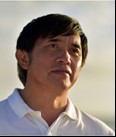
|
|
Chanmin Su |
|
Professor |
|
Institute of Automation |
|
Chinese Academy of Science
China |
|
Personal homepage |
|
Title: Quantum Regimes of Coherent X-ray Generation with Strongly Correlated Electron Dynamics and Attosecond Rabi Oscillations for Advanced Nanoimaging
Abstract: Controls of the advanced manufacturing, such as semiconductor, OLED/LED display and precision optics, have long entered nanometer scale. The measurements of dimensional, physical, and chemical properties became essential part in recipe tuning, quality control and failure analysis. The presentation will focus on the scanning probe microscopy (SPM) and its increasingly important role in both metrology and fabrication processes. We will discuss in detail the application needs and technologies for cross-scale metrology measurements with the dynamic range from sub nanometer to sub-meter. The presentation will further discuss progresses in physical and chemical analysis based on SPM.
| |
|
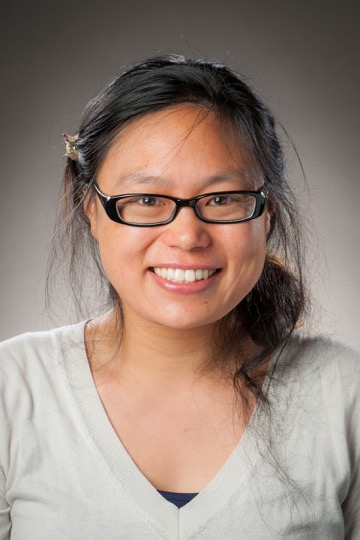
|
|
Valeska Ting |
|
Professor |
|
Australian National University, Australia |
|
University of Bristol, UK |
|
Personal homepage 1 |
|
Personal homepage 2 |
|
|
Title: Characterisation of Hydrogen in Nanoporous Hydrogen Storage Materials Via Neutron Scattering
Abstract: High surface area nanoporous materials such as porous carbon nanomaterials, zeolites and metal-organic framework materials are exceptionally suited for applications in gas separation and storage. Their nanoscale and macroscopic structures can be tuned to allow exceptionally high densities of gas within their pores, which can lead to exciting possibilities for energy storage, both by physical adsorption of alternative fuel gases such as hydrogen and through emergence of unusual materials states via gas densification.
It can, however, be extremely challenging to characterise and study interactions of H2 with nanoporous host materials due to hydrogen’s low electron density, which makes it difficult to detect in the presence of heavier elements using X-ray techniques.
Accordingly, we confined hydrogen in a range of nanoporous solids and used a combination of neutron scattering techniques under low temperatures (down to 10 K) and high pressures (up to 2 kbar) to elucidate the phase, interactions and behaviours of hydrogen inside porous materials with different pore sizes and geometries.
Here we will present results from various studies, highlighting different approaches for extracting key information from a range of hydrogen-containing materials. These include parametric studies and combinations of techniques including neutron scattering under static and dynamic conditions, gas sorption, molecular modelling and properties measurements under coupled extremes of low temperature and high pressures.
These results indicated the presence of molecular hydrogen arrangements with densities greater than that of solid hydrogen at its triple point, as well as the stabilisation of unusual configurations of hydrogen under a variety of temperature and pressure conditions. Such studies can produce surprising and useful insights into the effect of nanoconfinement on the atomic arrangement and properties of hydrogen under extreme environmental conditions, paving the way for developing new materials that will result in highly dense hydrogen phases for sustainable energy applications.
References:
[1] N. Bimbo, K. Zhang, H. Aggarwal, T. J. Mays, J. Jiang, L. J. Barbour, V. P. Ting. Hydrogen Adsorption in Metal–Organic Framework MIL-101 (Cr)—Adsorbate Densities and Enthalpies from Sorption, Neutron Scattering, In Situ X-ray Diffraction, Calorimetry, and Molecular Simulations. ACS Applied Energy Materials, 2021, 4(8): 7839-7847.
[2] M. Tian, M. J. Lennox, A. J. O’Malley, A. J. Porter, B. Krüner, S. Rudić, T. J. Mays, T. Düren, V. Presser, L. R. Terry, V. P. Ting. Effect of pore geometry on ultra-densified hydrogen in microporous carbons. Carbon, 2021, 173: 968-979.
[3] V. P. Ting , A. J. Ramirez-Cuesta, N. Bimbo, J. E. Sharpe, A. Noguera Diaz, V. Presser, S. Rudic, T. J. Mays. Direct evidence for solid-like hydrogen in a nanoporous carbon hydrogen storage material at supercritical temperatures. ACS nano, 2015, 9(8): 8249-8254.
|

|
|
Toshihisa Tomie |
|
Professor |
|
School of Physics |
|
Changchun University of Science and Technology, China |
|
National Institute of Advanced Industrial Science and Technology, Japan |
|
Japan |
|
Title: Development of a Commercial Inspecting Tool for Detecting Nm-Size Phase Defects on a Multilayer EUV Mask Blank
Abstract: Lithography using EUV light, EUVL, which has been developed for 20 years in Japan, the United States, and Europe, has just started operation as a mass production technology for semiconductors. Two difficulties required the development for such a long time; one was the difficulty in increasing the power of the EUV light source, and the other was a technology for inspecting nm-size phase defects on a multilayer EUV mask blank. The circuit patterns of the semiconductor devices drawn on the mask blank are photo-printed on the resist coated on the Si wafer with a diameter of 300 mm with a reduction ratio of 4:1 to fabricate a huge number of transistors with a 10 nm half-pitch repetition frequency. An inspection machine is indispensable for developing mask fabrication technology with the number of defects as low as possible so that fabricated devices do not make a malfunction.
Concerning the latter, the inspection speed of the technology before 2001 was desperately slow for inspecting a full 140 mm x 140 mm area in a few hours. We needed to increase the inspection speed more than several thousand times. The requirements on the inspection technology are not only on the inspection speed. All defects below the size of 50 nm on the mask are to be detected with no failure. Another stringent requirement is that there should be no false signal so that they do not throw away a good-quality blank.
The second show-stopper was solved by developing technologies for materializing the author's invention in 2001 as a commercial tool through two national projects in Japan, the MIRAI, and the EIDEC projects, from 2001 until 2016. The first inspection machine, produced by the Lasertec cooperation, was introduced to the market in 2017, and a few companies have started the introduction of EUVL in their mass production lines.
The invention was the result of my research for over 20 years. In my talk, I explain the basic concept of the inspection enabling the several thousand-time speed-up.
From the middle of the 1990s, the author was also deeply involved in the first show-stopper; increasing the EUV power of the source for EUVL. The author will also refer to some epoch-making technologies in the 20-year history of the EUV source development. |
|
|
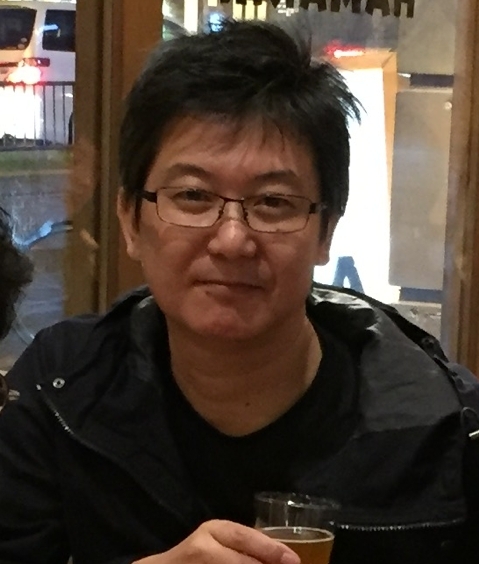
|
|
Takayuki Uchihashi |
|
Professor |
|
Department of Physics/ Institute for Glyco-core Research (iGCORE) |
|
The Exploratory Research Center on Life and Living Systems (ExCELLS), National Institutes of Natural Sciences |
|
Nagoya University |
|
Japan |
|
Personal homepage |
|
Title: Dynamic Structural Biology Driven By High-Speed Atomic Force Microscopy
Abstract: Most biological phenomena in the cell are elicited by a cascade of extensive dynamic molecular processes, including protein conformational changes, binding and dissociation, assembly and degradation. A fundamental understanding of complex biological processes is inherently reducible to understanding the dynamics of a small number of molecules at each step in such a cascade. Since protein motions are usually asynchronous and often have a multimodal distribution that cannot be directly assessed by ensemble averaging methods, it is necessary to monitor and analyze the dynamic behavior of individual molecules using a dynamic structural biology approach based on single molecule observation.
Among various microscopic techniques for characterizing protein structures and functions, high-speed atomic force microscopy(HS-AFM)is a unique technique in that allows direct visualization of structural changes and molecular interactions of proteins without any labeling in a liquid environment. Since its emergence in 2001 [1], it has been applied to the dynamics analysis of various types of proteins, including motor proteins, membrane proteins, DNA-binding proteins, amyloid proteins, and artificial proteins [2,3] and now has now become a versatile tool indispensable to drive research based on dynamic structural biology.
In this talk, I will review several recent bioimaging applications realized by HS-AFM and show what kind of dynamics phenomena can be observed by HS-AFM. This review provides overviews of several recent bioimaging applications achieved by HS-AFM, classified into imaging studies of conformational dynamics and protein-protein interactions. Recent instrumental developments to extend the capabilities of HS-AFM, especially molecular manipulation by localized force application, one of the key features of AFM, will also be discussed.
|
|
References:
[1] T. Ando, N. Kodera, E. Takai, D. Maruyama, K. Saito, and A. Toda, A high-speed atomic force microscope for studying biological macromolecules. Proceedings of the National Academy of Sciences, 2001, 98(22): 12468-12472.
[2] T. Ando, T. Uchihashi, & S. Scheuring, Filming biomolecular processes by high-speed atomic force microscopy. Chemical reviews, 2014, 114(6): 3120-3188.
[3] T. Uchihashi, & C.Ganser. Recent advances in bioimaging with high-speed atomic force microscopy. Biophysical Reviews, 2020, 12: 363-369.
|
|

|
|
Huan Wang |
|
Editor-in-Chief of Advanced Quantum Technologies |
|
Editor Advanced Functional Materials |
|
Editor Advanced Intelligent Systems |
|
John Wiley & Sons |
|
|
|
Title: Publishing in Wiley Material Science & Physics Journals - How to Maximize Your Success
Abstract: To maximize academic authors’ success in publishing, the speaker Huan Wang will share her advice on how to structure a paper, write a cover letter, and deal with awkward feedback from reviewers. An introduction of Wiley Online Library, the entire peer-review process, the materials science and physics journals in Wiley (Advanced Intelligent Systems, Advanced Functional Materials, Advanced Quantum Technologies, etc.), duplication-checking and the plagiarism guidelines will be delivered to the attendees as well. |
|

|
|
Yuquan Wei |
|
Professor |
|
State Key Laboratory of Biotherapy and Cancer Center |
|
West China Hospital, Sichuan University |
|
China |
|
Personal homepage |
|
Title: COVID-19 Vaccines Induce Protective Immunity Against Omicron Variant
Bio: Yuquan Wei, Academician of the Chinese Academy of Sciences, director of the State Key Laboratory of biotherapy of Sichuan University, director of the cancer center of West China Hospital of Sichuan University, CO editor in chief of the international magazine signal transmission and targeted therapy, and associate editor in chief of human gene therapy. In 1986, he graduated from West China Medical University with a master's degree in medicine. From 1991 to 1996, he studied abroad at the school of medicine of Kyoto University in Japan with a doctor's degree. He returned to China in 1996, mainly engaged in basic research, technology development and product research and development related to biological therapy and small molecule targeted therapy drugs for major diseases. The relevant research results have published more than 300 SCI papers in international magazines such as nature, nature medicine, PNAs and blood, and independently developed a number of vaccine biological drugs and small molecule targeted therapy drugs to cooperate with enterprises.
|

|
|
Zhongming Wei |
|
Professor |
|
Institute of Semiconductors |
|
Chinese Academy of Sciences |
|
China |
|
Personal homepage
|
|
Title: Polarization-Sensitive Photodetector and Image Sensor Based on 2D Materials
Abstract: As a typical representative of two dimensional (2D) semiconductors, group-IV chalcogenides have sparked considerable interest on account of its lattice structure, high compatibility with key semiconductor technology, and remarkable electrical and optical performance. Using group-IV chalcogenides with in-plane anisotropy as the photodetector's light absorption layer can effectively simplify the existing complex lens system, which can further promote device volume development toward miniaturization. Here, we demonstrate the application of polarizer-free polarization-sensitive photodetector/imagers made of 2D in-plane anisotropic layered semiconductors such as GeSe, SnSe, and GeAs, which are extremely sensitive to polarized light due to their reduced in-plane structural symmetry. |
|
|

|
|
Leslie Yeo |
|
Professor |
|
Distinguished Professor of Chemical Engineering |
|
Micro/Nanophysics Research Laboratory |
|
RMIT University |
|
Australia |
|
Personal homepage |
|
Title: High-Frequency Nanoelectromechanical Interactions Between Sound and Matter: A New Method for the Synthesis, Processing and Manipulation of Two‐Dimensional and Bulk Crystals
Abstract: We demonstrate the intriguing possibility of harnessing phonon sources, in particular, high frequency (10 MHz order) surface and hybrid acoustic waves, for synthesizing and manipulating two-dimensional and bulk crystals. In particular, we show that the large mechanical stresses that arise from the extraordinary surface acceleration of the acoustic wave—on the order of 10 million g’s, together with the intense electric field inherent in its electromechanical coupling, are capable of facilitating rapid synthesis of organic and inorganic crystals, as well as those of metal–organic frameworks (MOFs), often yielding novel crystal morphologies and structures. Moreover, the same process can be deployed to rapidly exfoliate bulk three-dimensional crystalline transitional metal dichalcogenides (TMDs;e.g.,MoS2) and carbides/nitrides (MXenes) into monolayer and few-layer nanosheets and quantum dots with high yield. Finally, the acoustic wave can be exploited for the manipulation of quasiparticles in these two-dimensional materials. For example, we show the possibility for reversibly modulating trion to exciton transition, and their subsequent transport and hence spatial separation within the material. In the case of the TMDs, we show with convincing evidence, that such novel phenomena can be attributed to their unique piezoelectric property, particularly when they exist in odd number of layers due to their broken crystallographic centrosymmetry.
|

|
|
Hongyu Zhang |
|
Associate Professor |
|
Department of Mechanical Engineering |
|
Tsinghua University |
|
China |
|
Personal homepage |
|
Title: Development of Lubricated Biomaterials for Various Biomedical Applications
Abstract: Various lubricated biomaterials including micro/nanoparticles, coatings, membranes, and hydrogels permit potential biomedical applications in the fields of osteoarthritis treatment, anti-bacteria, anti-adhesion, and tissue engineering. The typical biomaterials have attracted much attention from the researchers worldwide in the past few years. In this presentation, I will summarize recent progress on (1) the design and development of representative lubricated biomaterials such as nanoparticles, self-adhesive polymer coatings, electrospun nanofibrous membranes, and composite hydrogels, and (2) the preliminary biomedical applications of these lubricated biomaterials in joint lubrication enhancement, surface modification of biomedical devices, and tissue anti-adhesion. |
|
| |
*The list of Keynote speakers is based on the alphabetical order of family names |
|































